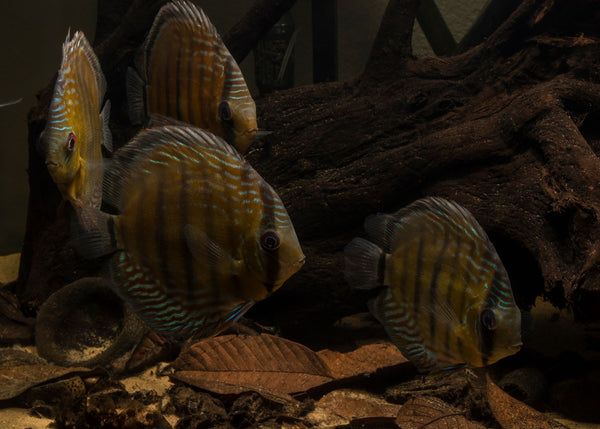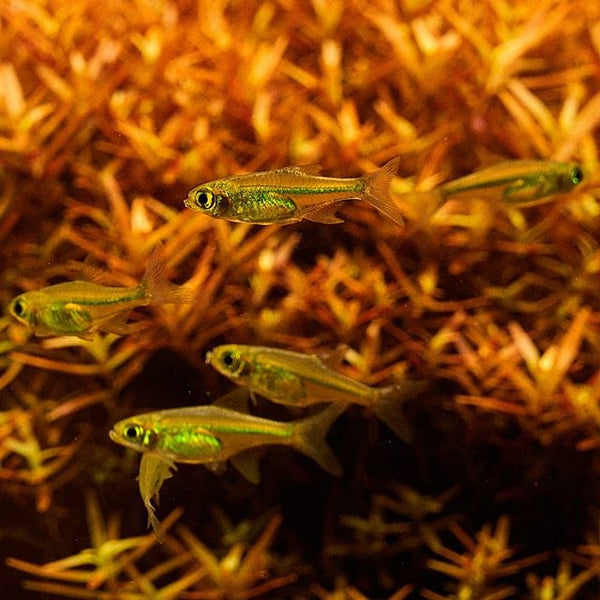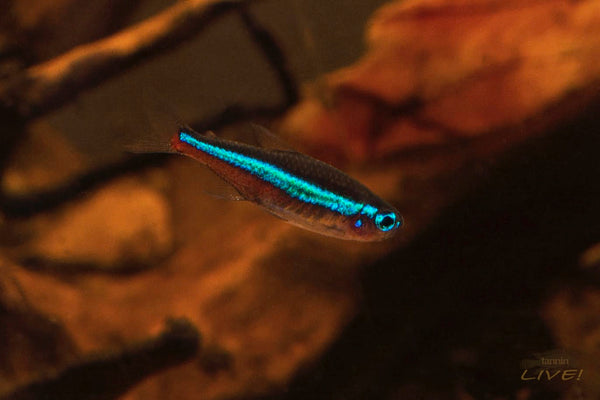- Continue Shopping
- Your Cart is Empty
The call of catappa...those "health benefits" re-thought...
We know that I'm obsessed with leaves. I love leaves and the benefits they offer for aquariums.
Conversely, I hate exaggerations, the perpetuation of myths, and the attribution of capabilities to techniques, products, etc. in the hobby which are only marginally based in fact. Especially when these ideas are pushed out by people who may not have all of the facts, the personal experience, and/or the background to back it up.
These things become very detrimental to the hobby.
Now look, I realize that many of these things are offered up with good intentions; not with some nefarious purpose in mind. I mean, sure, sometimes you'll see someone who has a vested interest in selling something proffer these kinds of things, which flat-out sucks.
On the other hand, many of these offerings are simply "regurgitations" by well-intended hobbyists who simply didn't bother to do their "due diligence" and research the facts before pushing it out on the web.
Well, that sucks, too. Right?

As a guy who sells leaves for a living, I've had to be careful to not ascribe miraculous attributes to the stuff I sell- because it's not only not helpful- it can be downright misleading and certainly counterproductive for the hobby and industry by doing so!
And I see a lot of counterproductive garbage being put out there at scale. It's important to address some of this stuff from time to time, especially when it's about our use of botanicals in natural-style aquariums. We have an obligation, of sorts, to elevate our practice of utilizing natural materials in aquariums, and that often means diving just a bit deeper when seemingly "too good to be true" assertions are made.

Here is one of the most misunderstood botanical claims:
Catappa leaves can "cure fish diseases."
This is one which has been perpetuated for years (often by people who sell leaves online and elsewhere -hey, I'm in that group, huh? Yikes! 😳 ).
This assertion bothers the shit out of me.
Although, it actually has some validity to it. I said "some"- because we in the hobby and industry tend to selectively "cherry pick" stuff we like from science and run with that, often overlooking some of the more sobering realities in favor of the "sizzle."
Yup.
Clarification is required.
It has been known for many years by science that botanicals like catappa leaves (and others) have compounds in their tissues which do have some potential medicinal functions, like saponins, phytosterols, punicalagins, etc. Fancy names that sound really cool- these compounds found in Catappa leaves are often bounced around on hobby sites as the "magic elixir" for a variety of fish ailments and maladies.

That's where the danger of regurgitation sneaks in.
Now, I can't entirely beat the crap out of this idea that Catappa leaves have some health benefits for fishes, as these compounds are known to provide certain health benefits...in humans. And for a long time, it was anecdotally assumed that they did the same for fishes. Now, sure, humans aren't fishes, as we all know...Yet, believe it or not, there have been studies that show benefits to fishes imparted by substances in Catappa and other leaves.

I stumbled across a university study conducted in Thailand with Tilapia which concluded that Catappa extract was "useful" for eradicating the nasty exoparasite, Trichodina, and found that the growth of a couple of strains of Aeromonas hydrophila was also inhibited by dosing Catappa leaf extract at a concentration of 0.5 mg/ml and up. In addition, this solution was shown to reduce the fungal infection in Tilapia eggs!

And it is now widely accepted by science that humic substances (such as those present in Catappa leaves and other botanical materials) are thought to have a wide range of health benefits for fishes in all types of habitats. We've covered this before in a great guest blog by Vince Dollar, and the implications for the hobby and industry are profound.
Although they are not the "cure all" that many vendors have touted them as, leaves and other botanicals do possess a wide range of substances which can have significantly beneficial impact on fish health.

So, these claims are not entirely erroneous; however, it's important NOT to make over-inflated assumptions about Catappa, and to assume that they are "miraculous things" that we can add to our tanks to do achieve smashing success at curing sick fishes. They are NOT.
Some of the stuff attributed to catappa is outright bullshit- cobbled-together "benefits" taken from studies of these things on humans, and then ascribed to fishes, mixed with a hearty dash of aquarium lore, rumor, assumptions, and half-truths.
So, yeah, there is some good stuff there. Yet, I am curious how some of these things really "translate" over to fishes, you know? I mean, there must be more to it than simply reading that they are good for humans and implying without hesitation that the same benefits apply to fishes. Right? I mean...

The practice of using catappa leaves in aquariums is quite old.
And there is a certain logic to their use, which is hard to question. For many years, Betta breeders and other enthusiasts in Southeast Asia added catappa leaves to the tanks and containers that held their fishes, and noticed a lot of positives…Those who actually fought their fishes seemed to feel that, when kept in water into which catappa had been steeped, their fishes recovered more quickly from their injuries. Those who simply kept fishes (not for “blood sport”) noticed increased overall vigor, appetite, and health among their fishes.

Okay.
Anecdotal? Perhaps.I mean, probably...
However, one thing I've learned about the early aquarists is that they employed very keen power of observation. They were a practical lot, if nothing more, who didn't have the internet and cool gadgets and stuff to rely on for information. It was more about trying stuff and going with things that seemed to work for them. They were obviously seeing something- or a combination of things, which led them to believe that using catappa leaves was beneficial to their fishes.
Now, this makes a lot of sense, right?
I mean, the natural habitats of many of the fishes of Southeast Asia are blackwater, botanical-influenced waters, rich with tannin from decomposing vegetation and naturally occurring peat. We’ve talked a lot about the benefits of “humic substances” for fish health, and, not surprisingly, there has actually been a fair amount of scholarly research into this area. As discussed above, many of the humic substances and compounds which benefit fishes are found in these natural waters.

As Catappa leaves and other botanical materials break down in our aquariums, they impart some of these beneficial compounds into the water, fostering a more healthy environment for fishes which are accustomed to blackwater conditions. Perhaps they perform an almost "prophylactic" role at preventing disease and supporting overall fish health, as opposed to functioning as some sort of "cure all."

And that leads to more questions, of course:
What "dosage" do we apply? How many leaves steeped in how much water yields aconcentrated solution of 0.5 mg/ml or more? How long do these materials need to be in the aquarium to accomplish this? And is there truly some measure of effectiveness?
We're learning the answers to some of these questions together. Catappa keeps calling...
Breaking through the barrier of assumptions, hyperbole, and fluff that has often clouded this tinted world before we all came together and made a real effort to understand the function as well as the aesthetics of this dynamic, engrossing hobby niche.

Let's keep working together to push the state of the hobby farther than ever, backed up with facts and personal experiences! When we aren't sure about something, there is absolutely no shame in saying, "We're just not sure..."
Everybody wins that way.
Winning is cool.
Stay curious. Stay resourceful. Stay engaged. Stay bold...
And Stay Wet.
Scott Fellman
Tannin Aquatics







Scott Fellman
Author